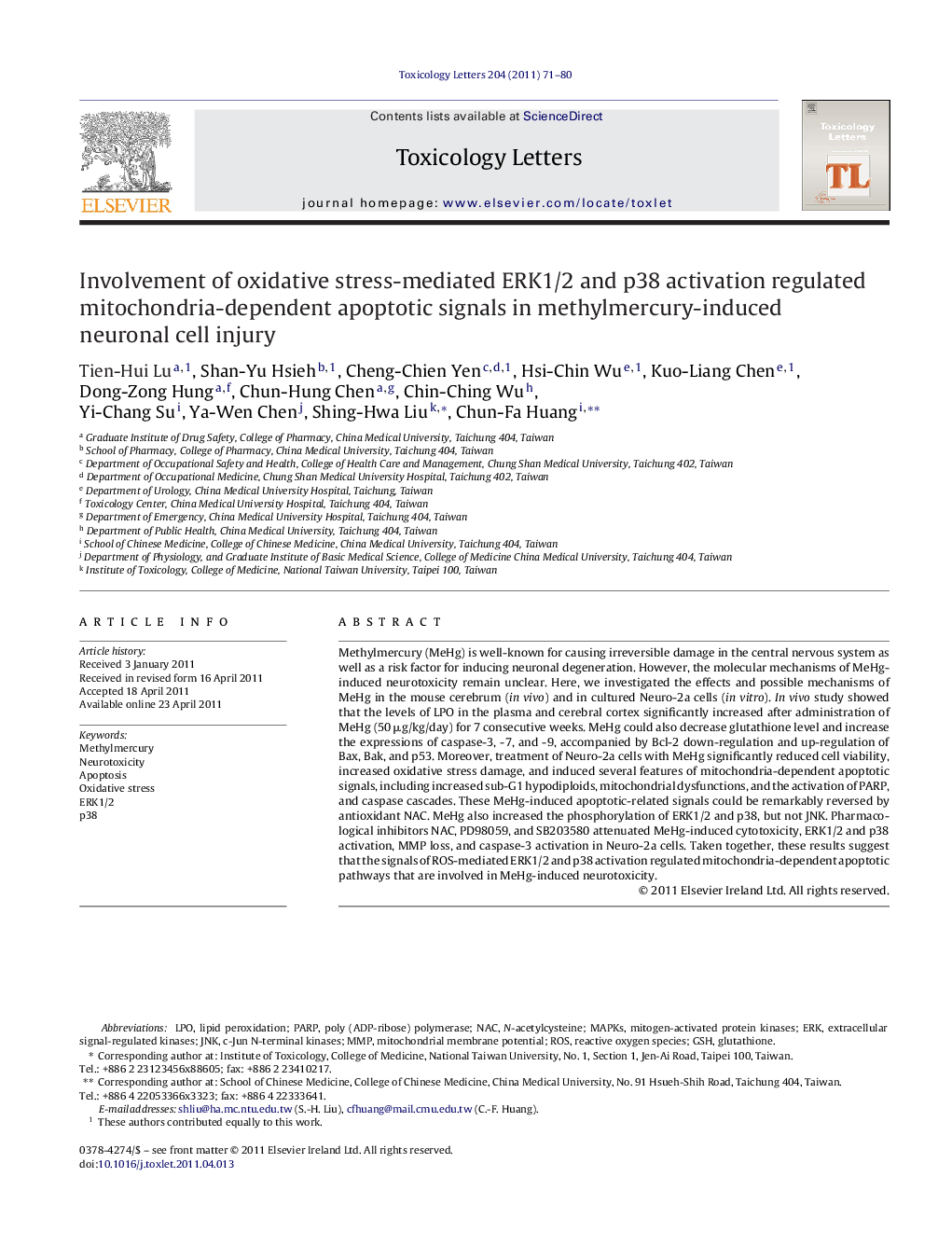| کد مقاله | کد نشریه | سال انتشار | مقاله انگلیسی | نسخه تمام متن |
|---|---|---|---|---|
| 2600434 | 1133264 | 2011 | 10 صفحه PDF | دانلود رایگان |

Methylmercury (MeHg) is well-known for causing irreversible damage in the central nervous system as well as a risk factor for inducing neuronal degeneration. However, the molecular mechanisms of MeHg-induced neurotoxicity remain unclear. Here, we investigated the effects and possible mechanisms of MeHg in the mouse cerebrum (in vivo) and in cultured Neuro-2a cells (in vitro). In vivo study showed that the levels of LPO in the plasma and cerebral cortex significantly increased after administration of MeHg (50 μg/kg/day) for 7 consecutive weeks. MeHg could also decrease glutathione level and increase the expressions of caspase-3, -7, and -9, accompanied by Bcl-2 down-regulation and up-regulation of Bax, Bak, and p53. Moreover, treatment of Neuro-2a cells with MeHg significantly reduced cell viability, increased oxidative stress damage, and induced several features of mitochondria-dependent apoptotic signals, including increased sub-G1 hypodiploids, mitochondrial dysfunctions, and the activation of PARP, and caspase cascades. These MeHg-induced apoptotic-related signals could be remarkably reversed by antioxidant NAC. MeHg also increased the phosphorylation of ERK1/2 and p38, but not JNK. Pharmacological inhibitors NAC, PD98059, and SB203580 attenuated MeHg-induced cytotoxicity, ERK1/2 and p38 activation, MMP loss, and caspase-3 activation in Neuro-2a cells. Taken together, these results suggest that the signals of ROS-mediated ERK1/2 and p38 activation regulated mitochondria-dependent apoptotic pathways that are involved in MeHg-induced neurotoxicity.
Figure optionsDownload as PowerPoint slide
Journal: Toxicology Letters - Volume 204, Issue 1, 4 July 2011, Pages 71–80